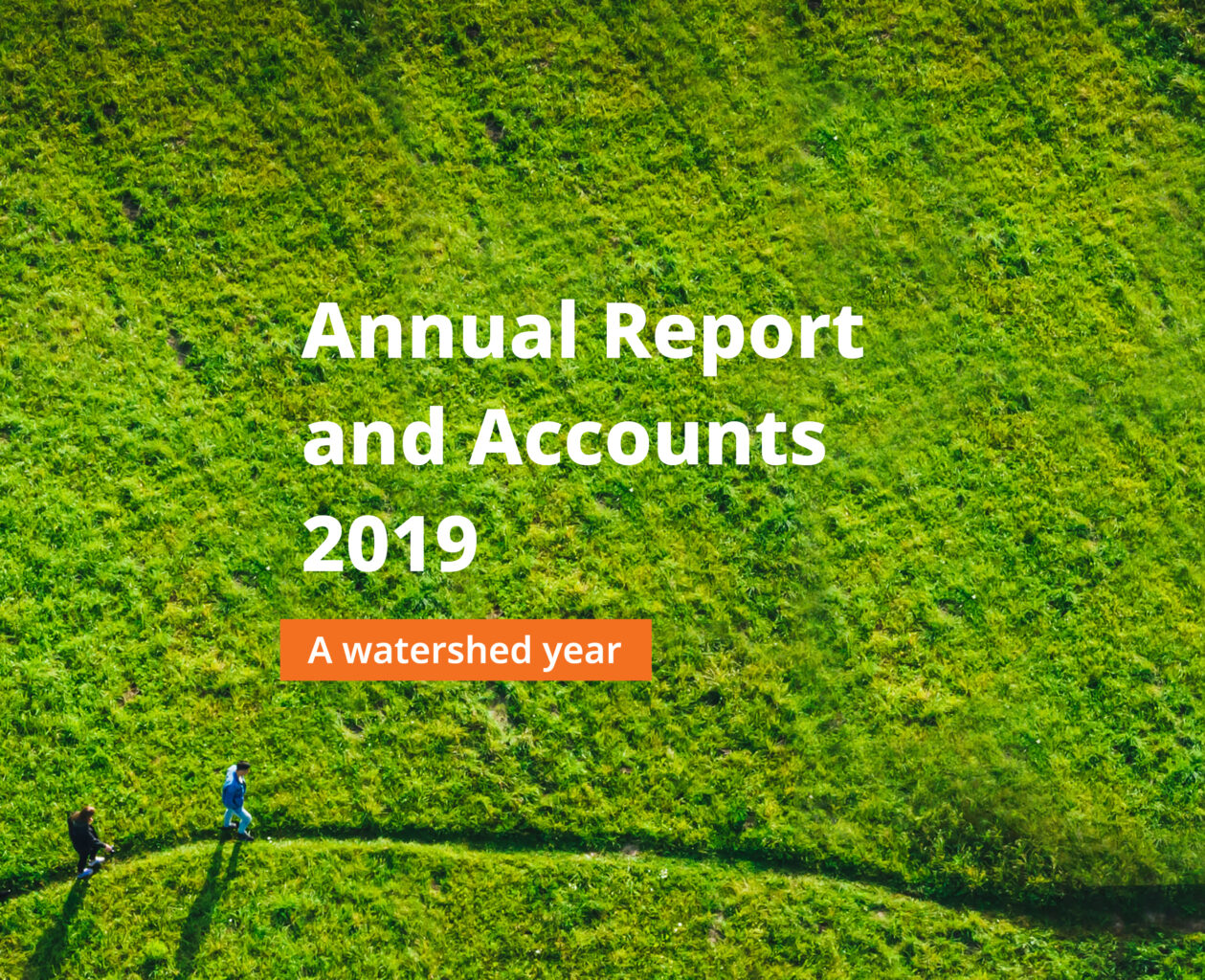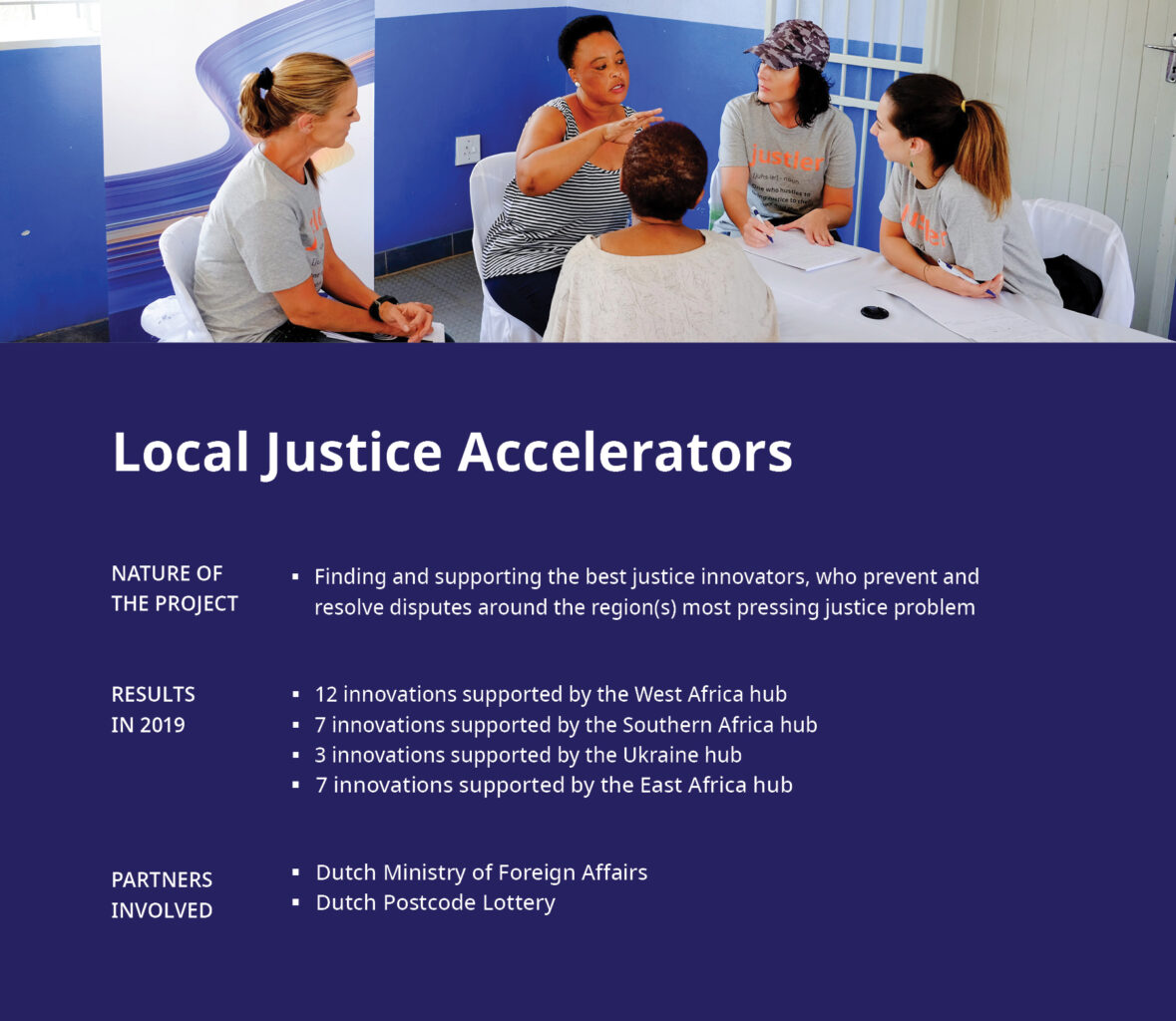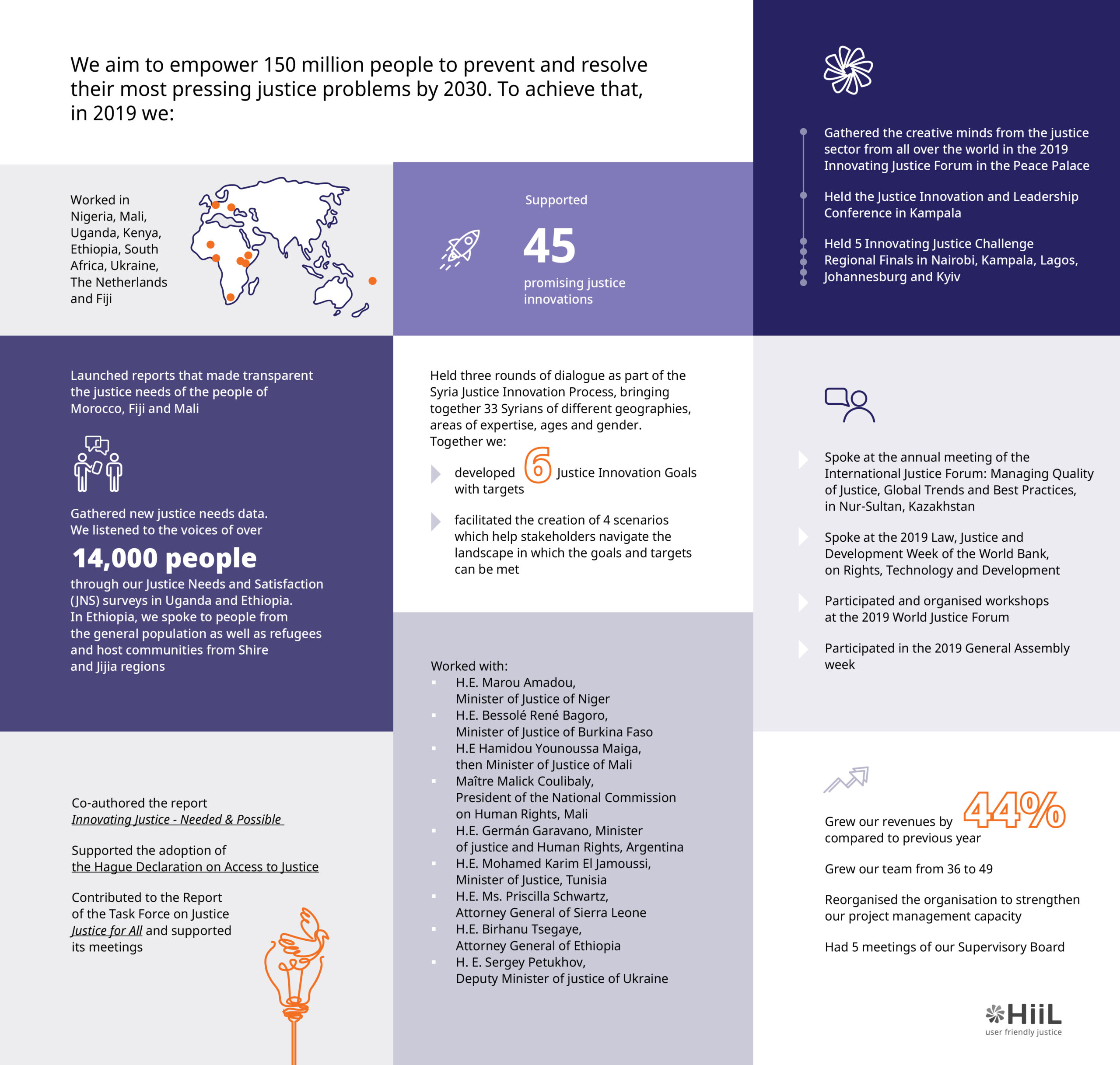The 2019 annual report is an interesting read. In it, are several diverse examples of ways in which we made user friendly justice around the world.

It is a strange time to look backwards. The current times has forced many of us to re-evaluate priorities, ways of working and mobilised many new responses to access to justice challenges.
Looking back is what accountable organisations do: we ask what did we set out to achieve, and what problems did we help resolve or prevent? Did we learn valuable things to carry forward into 2020?
The purpose of the annual report is to look at the relationship between our actions and our impact. Our mission aligns with SDG16 and specifcally sub-target 3, which is a universal target for access to justice. We put a number on our goal: we aims to prevent or resolve 150 million justice problems before 2030.
So 2019, did our actions lead us in the right direction towards our goals?
Deeper country engagements
In 2019, we continued to contribute to user friendly justice through our engagements in the countries in which we support peace and justice. Highlights include two new nation-wide Justice Needs and Satisfaction surveys in Mali and Uganda, collecting data for a new nation-wide survey Ethiopia, successfully concluding Justice Transformation Stakeholder Dialogues relating to justice for people in Syria, helping an impressive cohort of justice entrepreneurs scale in HiiL’s Justice Accelerator, and the investigative research that goes into the SDG 16.3 Trend Report.
In the 2019 annual report, we highlight the progress we and our partners have made in Syria, Mali, Uganda, Nigeria for user friendly justice.
We also put the spotlight on the developments in four hubs that support local justice innovation ecosystems (Local Justice Accelerators). We have grown these Hubs over many years to reach the point they are now: on the cusp of an exciting new chapter, social franchising.
Read about the impact the HiiL Justice Accelerator has had in Ukraine, West Africa, East Africa, and South Africa

Partnerships remain a core element of our work for justice
We made waves internationally with an alliance of organisations working towards SDG16 targets. Under the guise of the Task Force on Justice, we shared data and analytical capacity to conclude that a massive 5,1 billion people do not have adequate access to justice.
Our work is ongoing. In response to the Covid-10 challenge, we have mobilised to produce Justice for All and the Public Health Emergency, building on the foundations we laid in 2019. HiiL launched a new data-gathering initiative for an evidence-based approach to targeted responses by justice leaders. All of us need to move. All of us need support in one form or another to protect peace and justice.
We need a more data-driven way of working. We need to open the sector up to innovation. We need to include prevention in what we do. This new paradigm shift was enshrined in The Hague Declaration on the Rule of Law and the final report of the Task Force, both products of this watershed year.
Read more about our key strategic and implementing country partners in the annual report.
What is new?
People’s voices make justice user-friendly
To date, we listened to people’s voices in nation-wide justice studies in 27 different countries. The tool we built to do it with was first created 8 years ago. Fast forward to now, the largest-we-have-ever-known, Justice Research and Development department develop more evidence-based guidelines, produce actionable data for policy makers, and publish leading SDG16 Trend Reports.
In 2019, we launched reports that made transparent the justice needs of the people of Morocco, Fiji and Mali. The new Justice Dashboard launches this year brings all the learnings collected over 15 years to come together in a tool that can support leaders, innovators, service providers and impact investors.

Local entrepreneurs make services user-friendly
The development of the Justice Accelerator model remains ongoing to help accelerate promising justice innovations along their journey. The acceleration programme is increasingly targeted, specific and networked. Search missions for the world’s most suitable solutions to local pressing justice needs from The Hague, have been replaced by sustainable local hubs. Justice innovation ecosystems generate a pipeline of innovations that increasingly are of higher-quality. Our methods of supporting and discerning them have improved and are guided more by country data.
Complex environments are ripe for rebuilding justice to be
user-friendly for all people
The methods that we pursue our goals of preventing or resolving 150 million justice problems by 2030 are working well. Even in increasingly complex environments. The challenges involved with rebuilding and resuming usual justice system activities post-conflict is an area ripe for innovation. HiiL and Reos Partners have developed such a new approach
There is so much more to tell you…
Whether you are interested in user friendly justice in a specific region, evidence and data for justice needs and treatments, system-wide transformation processes, how our teams grew, the incredible events we hosted and contributed to, the annual report can entertain you.

Our future goals
2019 was predicted to be the year for equal access to justice for all, and in many ways it was. Here we present our 2019 learnings and impact with a sense of pride and also ambition for the furthering user friendly justice. Yet, we simply cannot acknowledge our impact without acknowledging you: Our partners, our donors, our staff, our supporters and clients. We hope you know how important to us you are in helping make user friendly justice happen.
Read more about our future goals based on 2019 learnings inside the annual report.

